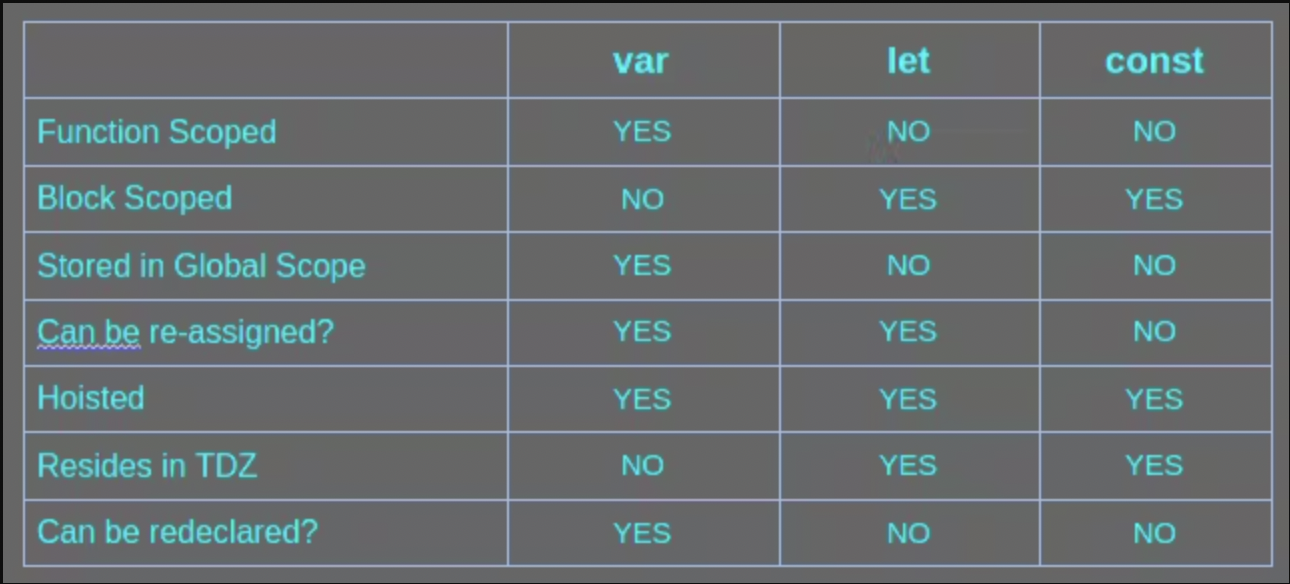let and const
Traditionally, the keyword var is been used to declare variables in JavaScript but ES6 introduced two other keywords let and const to declare a variable. There are some issues with var that let and const try to solve.
Let's look into details about let and const and compare them with var.
a. let and const are block { } scoped.
This means let and const declared in a block can not be accessed outside of that block, whereas var is function scoped, meaning var variables can not be accessed outside of the function in which it is declared.
See code snippet below for more clarity.
// Scenario - 1
{
const y = 20;
var z = 30;
console.log(y) // 20
console.log(z) // 30
}
console.log(z); // 30
console.log(y); // Uncaught ReferenceError: y is not defined
// scenario -2
function foo(){
var a = 2;
console.log(a); // 2
}
foo();
console.log(a) //Uncaught ReferenceError: a is not defined"
b. let and const can not be redclared in the same scope.
We can not redeclare let and const variables in the same scope but var has no such restrictions. Redeclaring var will overwrite the older variable's value.
// Var scenario
var x = 10;
console.log(x); // 10
var x = "Twitter";
console.log(x) // Twitter
// Let or const scenario
let y = 20;
let y = "Twitter"; // This line gives Error
NOTE that the above program will not print anything unless you remove the erroneous last line.
c. let and const can not be accessed before declaration.
let and const reside at a special memory location called the temporal dead zone (TDZ). TDZ ends when the execution reaches the line where they are declared. So, after that line, if let variable is not initialized with a value, it logs undefined.
console.log(a); // Undefined
var a = 10;
let c;
console.log(c); // undefined
console.log(b); // Error
let b = 20;
I have summarized all features of let and const in one image. See the below image.
